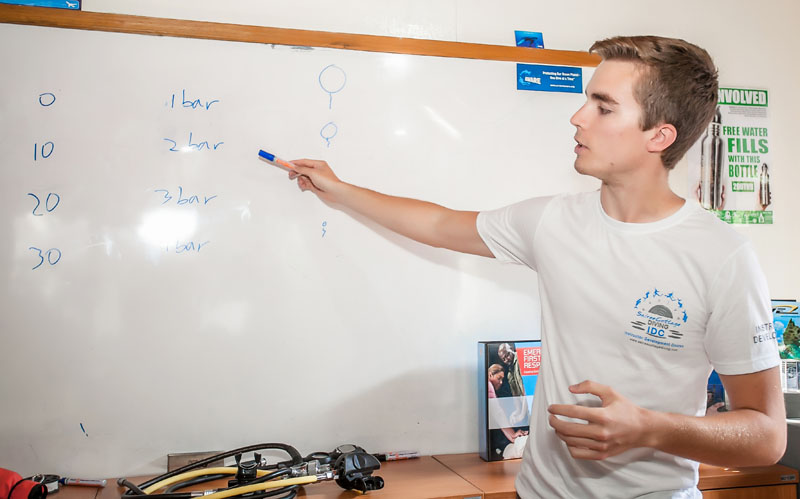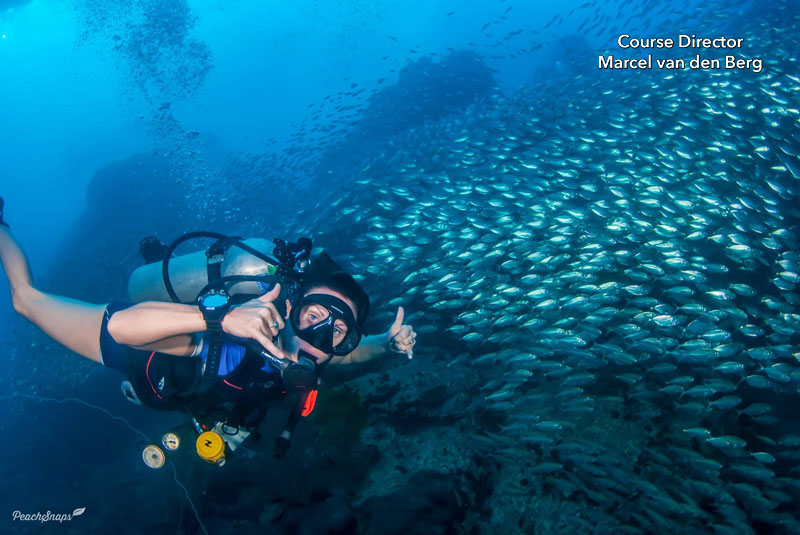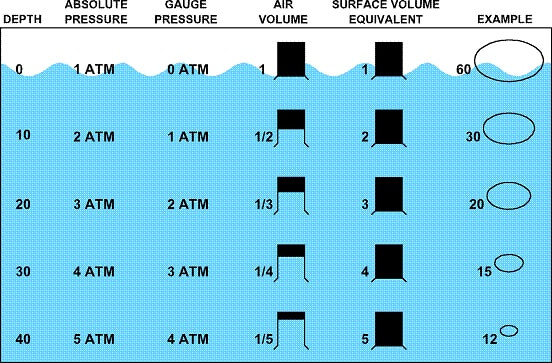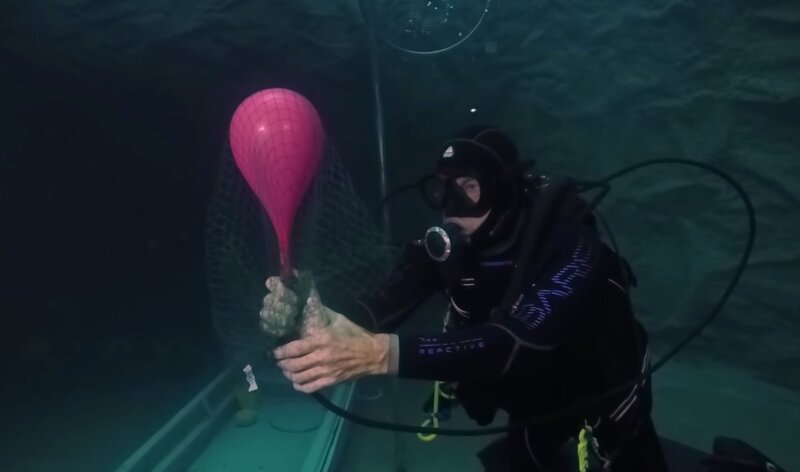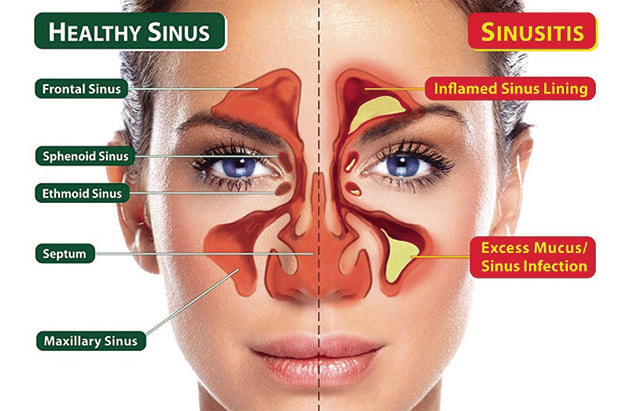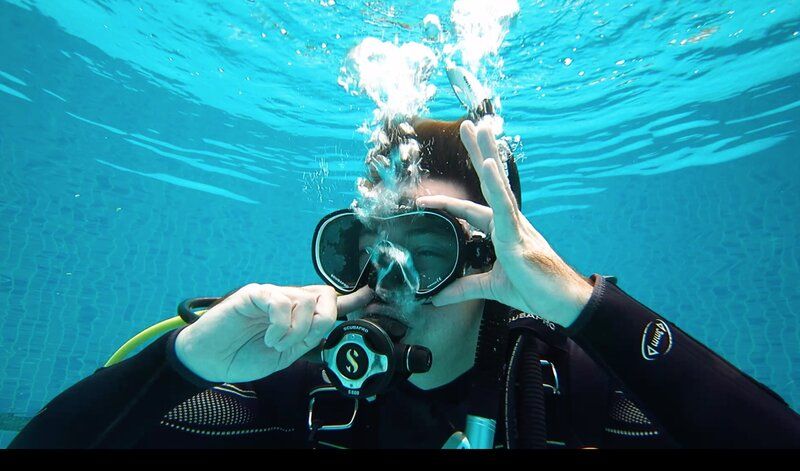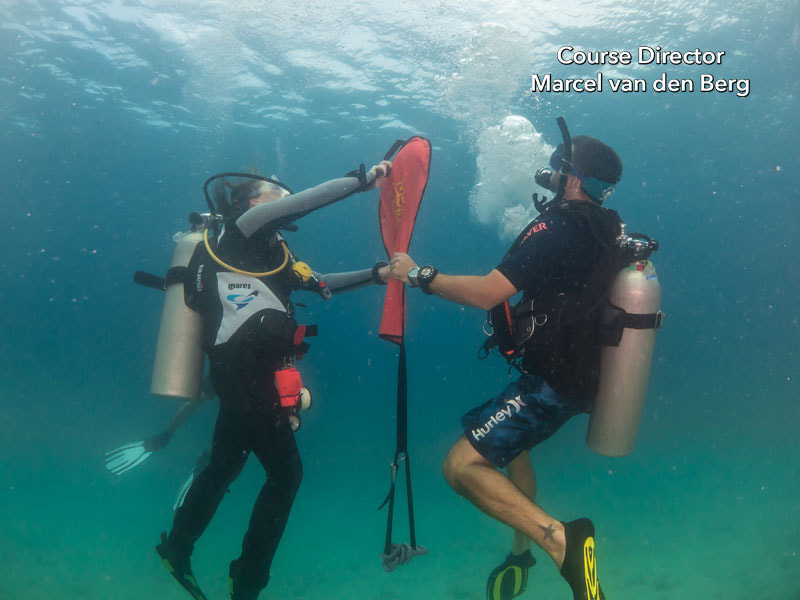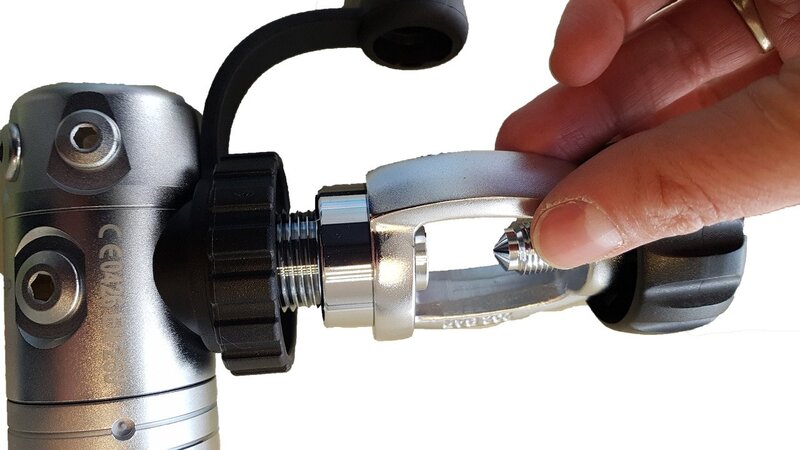PADI Open Water Diver Manual Answers Chapter 1 - Knowledge Review
PADI Open Water Diver Manual Answers Chapter 1 is explained on this page to help you understand the PADI Open Water Knowledge Review 1 Answers.
Are you excited to go Scuba Diving and get your PADI Open Water Diver certification? Your course is not that hard and there will be lots of fantastic scuba diving involved.
However, we do need to learn some basic dive theory from the manual with the knowledge review questions. This is for most people not the most exciting part of the PADI Open Water Diver Course, but it is necessary to help you safely enjoy scuba diving.
However, we do need to learn some basic dive theory from the manual with the knowledge review questions. This is for most people not the most exciting part of the PADI Open Water Diver Course, but it is necessary to help you safely enjoy scuba diving.
Here I will explain all the PADI Open Water Diver Course Manual Answers Chapter 1 to help you easily understand all the PADI Open Water Knowledge Review Questions and to get you ready for your scuba diving certification.
Question 1 - PADI Open Water Diver Manual Answers Chapter 1
Question 1: Pressure, Volume, and Density in Scuba Diving.
When going scuba diving underwater we will be exposed to more surrounding pressure than when we are on land.
On land, we have the air pressure surrounding us which is 1 bar/ata of pressure at the surface. For every 10 meters, underwater the pressure increases by 1 bar/ata.
At 10 meters we will have 1 bar/ata of water pressure surrounding us, but then we have to add the 1 bar/ata from the surface which gives us 2 bar/ata at 10 meters of depth.
On land, we have the air pressure surrounding us which is 1 bar/ata of pressure at the surface. For every 10 meters, underwater the pressure increases by 1 bar/ata.
At 10 meters we will have 1 bar/ata of water pressure surrounding us, but then we have to add the 1 bar/ata from the surface which gives us 2 bar/ata at 10 meters of depth.
At 30 meters we have 3 bar/ata of water surrounding us and with the extra 1 bar/ata from the surface, we have 4 bar/ata. An easy way to calculate this is by using this formula: Depth / 10 + 1 =
Because the pressure increase it will also increase the density of any air that we have underwater. The density increase is easily found as it is the same number as the bar/ata. So, at 30 meters we have 4 bar/ata which means we have 4 times more density.
Because the pressure increase it will also increase the density of any air that we have underwater. The density increase is easily found as it is the same number as the bar/ata. So, at 30 meters we have 4 bar/ata which means we have 4 times more density.
Question 2 - PADI Open Water Diver Manual Answers Chapter 1
Question 2: Different ways of equalizing your ears.
Like we just discussed in question 1, when we are going underwater we increase the pressure surrounding us. We don’t feel that on most parts of our body except for where we have some air spaces inside our body.
These air spaces are located in your sinuses, eustachian tubes connecting your ears and your lungs. In all these air spaces we need to equalize the pressure before we feel discomfort.
Like we just discussed in question 1, when we are going underwater we increase the pressure surrounding us. We don’t feel that on most parts of our body except for where we have some air spaces inside our body.
These air spaces are located in your sinuses, eustachian tubes connecting your ears and your lungs. In all these air spaces we need to equalize the pressure before we feel discomfort.
The first effect of the increase of pressure you feel on your ears. This is because when we descent water will flow into your ears and put pressure on your eardrums. You can easily counter that by or blocking your nose and attempt to gently blow through it or swallow and wiggle your jaw from side to side. These are most common way to equalize your ears when scuba diving.
To block your nose, you gently squeeze it with your fingers, hold it close. Then gently try to breathe out while also keeping your mouth closed. Now the air cannot escape through your mouth and your nose which will redirect it through your Eustachian Tubes and put pressure can on the other side of your eardrums, equalizing your ears.
To block your nose, you gently squeeze it with your fingers, hold it close. Then gently try to breathe out while also keeping your mouth closed. Now the air cannot escape through your mouth and your nose which will redirect it through your Eustachian Tubes and put pressure can on the other side of your eardrums, equalizing your ears.
If that doesn’t work well or if you want to use it together you can use another equalizing technique which is wiggling your jaw from side to side. This causes your sinuses and Eustachian tubes to stretch creating a pressure difference that also equalizes the ears. Most people prefer to use the first answer: a, but some like b or use both.
Give it a try and see what works best for you, but whatever you do, always equalize gently and never forcefully.
Give it a try and see what works best for you, but whatever you do, always equalize gently and never forcefully.
Question 3 - PADI Open Water Knowledge Review 1 Answers
Question 3: What to do when you are having trouble equalizing your ears?
When you descent too fast without equalizing on time, you might risk a squeeze. Most of the time this happens when you might get excited to go down to see the reef or when you are trying to keep up with others who are decanting fast.
We recommend you to always slowly decent and equalize often. When you decent too fast and don’t equalize on time you start feeling discomfort because there is too much pressure on your eardrum. This pressure might become so high that you can’t equalize your ears anymore.
When you descent too fast without equalizing on time, you might risk a squeeze. Most of the time this happens when you might get excited to go down to see the reef or when you are trying to keep up with others who are decanting fast.
We recommend you to always slowly decent and equalize often. When you decent too fast and don’t equalize on time you start feeling discomfort because there is too much pressure on your eardrum. This pressure might become so high that you can’t equalize your ears anymore.
This is easily solved by slowly ascending a bit and try to equalize your ears again. By going up a bit you reduce the pressure on your eardrum, making it easy to equalize again. If it doesn’t work, then slowly go up a bit more and try again.
You don’t have to go back up to the surface, usually ascending a little bit is enough. However, if in the unlucky event it doesn’t work, then of course you can always go back up to the surface. Just make sure you go with your Scuba Diving Instructor or/and your buddy and ascent slowly. This is rare as normally ascending a little bit and equalizing again works wonders!
You don’t have to go back up to the surface, usually ascending a little bit is enough. However, if in the unlucky event it doesn’t work, then of course you can always go back up to the surface. Just make sure you go with your Scuba Diving Instructor or/and your buddy and ascent slowly. This is rare as normally ascending a little bit and equalizing again works wonders!
Question 4 - PADI Open Water Diver Manual Answers Chapter 1
Question 4: When should you equalize your ears?
The reason why scuba divers feel discomfort or pain in their ears is because they descent too fast without equalizing on time. It is therefore important to equalize early and often.
Some people say you should equalize every meter or so, I recommend equalizing your ears all the time, this way you should never feel discomfort.
The reason why scuba divers feel discomfort or pain in their ears is because they descent too fast without equalizing on time. It is therefore important to equalize early and often.
Some people say you should equalize every meter or so, I recommend equalizing your ears all the time, this way you should never feel discomfort.
Question 5 - PADI Open Water Diver Manual Answers Chapter 1
Question 5: Can you Scuba Dive with a cold?
People with a cold usually have congestion forming in their sinuses and other air spaces. This congestion can block the airflow in your sinuses and eustachian tubes, making it hard or even impossible to equalize your ears.
Some scuba divers use anti congestion medication to be able to scuba dive. This is bad and you should never do this. Depending on the person and the conditions medication can wear off, be less effective, or cause side effects under pressure. This can cause serious problems underwater.
People with a cold usually have congestion forming in their sinuses and other air spaces. This congestion can block the airflow in your sinuses and eustachian tubes, making it hard or even impossible to equalize your ears.
Some scuba divers use anti congestion medication to be able to scuba dive. This is bad and you should never do this. Depending on the person and the conditions medication can wear off, be less effective, or cause side effects under pressure. This can cause serious problems underwater.
Don’t scuba dive if you have or suspect a cold. Just stay home, rest and drink lots of water and then go scuba diving when you are fit and healthy again.
Question 6 - PADI Open Water Knowledge Review 1 Answers
Question 6: What is the most important rule in scuba diving?
Same as our ears we also have to equalize our lungs while scuba diving. If we don’t then on the ascent we risk lung overextension injury. This is a serious condition that can be life-threatening.
Same as our ears we also have to equalize our lungs while scuba diving. If we don’t then on the ascent we risk lung overextension injury. This is a serious condition that can be life-threatening.
If we hold our breath on the ascent, we trap the air in our lungs and that starts expanding as we move from high to low pressure, to the point it can damage our lungs.
The good news is that we can easily solve this by doing nothing special other than breathing. When you scuba dive you should always breathe continuously and never hold your breath to let air escape from your lungs at any time, but especially during ascent.
The good news is that we can easily solve this by doing nothing special other than breathing. When you scuba dive you should always breathe continuously and never hold your breath to let air escape from your lungs at any time, but especially during ascent.
Question 7 - PADI Open Water Diver Manual Answers Chapter 1
Question 7: What can happen when you hold your breath during scuba diving?
If you hold your breath on the ascent while scuba diving you can rupture your lungs as expanding air cannot escape. When you ascend you move from high surrounding pressure to low pressure. This causes air from your lungs to expand.
This is not a problem if you breathe continuously, but if you hold your breath you trap the air in your lungs, and on the ascent, it can expand to a volume that can cause serious lung overexpansion (lung rupture) injuries.
If you hold your breath on the ascent while scuba diving you can rupture your lungs as expanding air cannot escape. When you ascend you move from high surrounding pressure to low pressure. This causes air from your lungs to expand.
This is not a problem if you breathe continuously, but if you hold your breath you trap the air in your lungs, and on the ascent, it can expand to a volume that can cause serious lung overexpansion (lung rupture) injuries.
Question 8 - PADI Open Water Diver Manual Answers Chapter 1
Question 8: Feeling discomfort in your sinuses when ascending.
Feeling discomfort in a body air space while ascending is called a reverse block. You will feel this in your sinuses and ears. This is the opposite of a squeeze. When we experience a squeeze we ascent a bit to solve it but with a reverse block we decent a bit.
This will cause the trapped air to become smaller, which makes you feel better. Then you should ascent again, but this time much slower. This will slowly expend the trapped air until it squeezes out of your airways. When that happens it gives you a relieving feeling.
Feeling discomfort in a body air space while ascending is called a reverse block. You will feel this in your sinuses and ears. This is the opposite of a squeeze. When we experience a squeeze we ascent a bit to solve it but with a reverse block we decent a bit.
This will cause the trapped air to become smaller, which makes you feel better. Then you should ascent again, but this time much slower. This will slowly expend the trapped air until it squeezes out of your airways. When that happens it gives you a relieving feeling.
Reverse blocks are usually caused by narrow airways or if you have congestion inside your sinuses. It is best to visit a physician after a reverse block and let him/her decide when you can continue scuba diving again.
If the solution to stop, descend slightly and give trapped air time to work its way out doesn’t work, then a great other trick is to decent a bit and then blow your nose underwater to remove any congestion you might have. Do not take your mask off, leave it on and just blow your nose in your scuba mask and clear it the same way you clear water from your mask.
If the solution to stop, descend slightly and give trapped air time to work its way out doesn’t work, then a great other trick is to decent a bit and then blow your nose underwater to remove any congestion you might have. Do not take your mask off, leave it on and just blow your nose in your scuba mask and clear it the same way you clear water from your mask.
Question 9 - PADI Open Water Knowledge Review 1 Answers
Question 9: Why do you use more air when you dive deeper?
We use our air faster the deeper we dive. This is because of the increase in pressure. How much faster we use our air relates to the bar/ata. At 10 meters we use twice as much air as at the surface as the pressure doubles from 1 bar to 2 bar.
We use our air faster the deeper we dive. This is because of the increase in pressure. How much faster we use our air relates to the bar/ata. At 10 meters we use twice as much air as at the surface as the pressure doubles from 1 bar to 2 bar.
At 20 meters we use 3 times more air than on the surface because the pressure at 20 meters is 3 bar and so on. For this reason, our air supply will be shorter at 18 meters than at 10 meters.
Question 10 - PADI Open Water Diver Manual Answers Chapter 1
Question 10: What to do when you get overexerted underwater because of swimming too fast?
This is a very important question to understand as many problems can follow overexertion underwater. Same as on land we get overexerted when we move too much.
Underwater this happens faster because of the resistance of the water (it is harder to move through water). The more we use energy the more we tend to breathe. This can lead to hyperventilation.
This is a very important question to understand as many problems can follow overexertion underwater. Same as on land we get overexerted when we move too much.
Underwater this happens faster because of the resistance of the water (it is harder to move through water). The more we use energy the more we tend to breathe. This can lead to hyperventilation.
Underwater it is harder to exhale our carbon dioxide because of the pressure and dead airspaces. A build-up of carbon dioxide triggers more shallow breathing, leading to hyperventilation, followed by panic because you feel that you can’t get enough air.
You can easily solve this while scuba diving by stopping all of your activity, rest and take long slow deep breaths. Even better is to prevent this from happening by always moving as slow as possible when you scuba dive.
You can easily solve this while scuba diving by stopping all of your activity, rest and take long slow deep breaths. Even better is to prevent this from happening by always moving as slow as possible when you scuba dive.
Question 11 - PADI Open Water Diver Manual Answers Chapter 1
Question 11: Why are objects more buoyant in salt water than in freshwater?
An object is neutrally buoyant when it displaces the same weight of water as the weight of the object. 1 Litre of freshwater weighs 1 Kilo. For example, if an object weighs 10 kilograms and displaces 10 liters of freshwater it will be neutrally buoyant.
An object is neutrally buoyant when it displaces the same weight of water as the weight of the object. 1 Litre of freshwater weighs 1 Kilo. For example, if an object weighs 10 kilograms and displaces 10 liters of freshwater it will be neutrally buoyant.
If we now place the same object in saltwater it will float. This is because saltwater weighs more than freshwater as it is denser (it has salt in it). The object will still displace the same amount of water, but that amount of water now weighs more than the object and that will cause the object to float.
Question 12 - PADI Open Water Knowledge Review 1 Answers
Question 12: What are the benefits of a buddy system?
With the proper course like the self-reliant diver specialty, you can scuba dive by yourself under certain conditions. We however always recommend you to scuba dive with a buddy, especially without the proper training.
With the proper course like the self-reliant diver specialty, you can scuba dive by yourself under certain conditions. We however always recommend you to scuba dive with a buddy, especially without the proper training.
Scuba Diving with a buddy is always safer than diving alone. You can do a buddy check before the dive, help each other with practicalities like carrying dive equipment and your buddy can help you in the unlikely event you have an emergency while scuba diving.
On top of that, it is way more fun to scuba dive with a buddy as you can show each other awesome marine life underwater and you can talk about your scuba diving adventures after the dive.
On top of that, it is way more fun to scuba dive with a buddy as you can show each other awesome marine life underwater and you can talk about your scuba diving adventures after the dive.
Question 13 - PADI Open Water Diver Manual Answers Chapter 1
Question 13: What to think of when buying scuba equipment?
I know that we all love brands and designs of products, and I admit it can be a deciding factor what scuba gear to buy. However, suitability, fit, and comfort are more important factors to consider when choosing your scuba gear.
First of all, you want to make sure the dive equipment is suitable for the type of water and conditions you will be diving in. For example, you probably choose a thicker wetsuit if you decide to dive in colder water.
I know that we all love brands and designs of products, and I admit it can be a deciding factor what scuba gear to buy. However, suitability, fit, and comfort are more important factors to consider when choosing your scuba gear.
First of all, you want to make sure the dive equipment is suitable for the type of water and conditions you will be diving in. For example, you probably choose a thicker wetsuit if you decide to dive in colder water.
Fit is also important as I remembered a long time ago that I fell in love with a specific mask, it looked amazing, soft latex seal, great vision, etc. But in the end, it just didn’t fit my face which is super important in a scuba mask. Therefore I choose another mask that fit me much better.
Besides suitability and fit, comfort is also a very important consideration when choosing any piece of scuba gear. In the end, we want to have fun and the more comfortable your diving equipment is, the more you enjoy the dive. On top of that comfort can also help your scuba diving skills. For example, a comfortable BCD will help to control your buoyancy.
Besides suitability and fit, comfort is also a very important consideration when choosing any piece of scuba gear. In the end, we want to have fun and the more comfortable your diving equipment is, the more you enjoy the dive. On top of that comfort can also help your scuba diving skills. For example, a comfortable BCD will help to control your buoyancy.
Question 14 - PADI Open Water Diver Manual Answers Chapter 1
Question 14: What should you do when your scuba gear is broken?
It is very important and you want to make sure that your scuba gear and especially your regulator are in great condition when scuba diving. This is one of the reasons why we always check our dive equipment by ourselves and later again with a buddy before every dive.
It is very important and you want to make sure that your scuba gear and especially your regulator are in great condition when scuba diving. This is one of the reasons why we always check our dive equipment by ourselves and later again with a buddy before every dive.
Always read your manufactures manual on how often you should inspect and service your regulator and other scuba gear with a licensed scuba technician. Even if nothing is wrong with it, you should still service your dive equipment regularly.
Learn more on how to assemble your scuba dive equipment
Learn more on how to assemble your scuba dive equipment
Question 15 - PADI Open Water Knowledge Review 1 Answers
Question 15: Can you use a DIN first stage in a yoke valve?
Yes, you can use a DIN regulator on a yoke cylinder valve by using an adaptor. Not many dive shops have these adaptors for rent. So I recommend you to purchase one and bring it with you on your diving travels.
Question 16 - PADI Open Water Diver Manual Answers Chapter 1
Question 16: Why is it important to have good buoyancy while scuba diving?
Buoyancy control is one of the most important things to master when scuba diving. Adjusting your buoyancy is not easy for beginner scuba divers, but after some practice, it will become second nature.
Buoyancy control is one of the most important things to master when scuba diving. Adjusting your buoyancy is not easy for beginner scuba divers, but after some practice, it will become second nature.
You can compare learning buoyancy controls the same as learning how to ride a bicycle or car. In the beginning, it feels impossible to master, but after some time passed you hardly think about it.
We mainly like to use our lungs for buoyancy control. By breathing in you expand your lung, displacing more water which makes you rise(ascent) a bit. Exhaling will deflate your lungs, displacing less water which in turn makes you fall(descent) a bit. By breathing normally you should stay in one place, hover and achieve neutral buoyancy.
If you can’t control your buoyancy with your lungs then you can also use your BCD for buoyancy control by adding or releasing a bit of air from it.
Always review your PADI Open Water Diver Manual Answers Chapter 1 with a certified PADI Diving Instructor and PADI Dive Shop during your PADI Open Water Diver Course. Read full disclaimer here.
Continue to PADI Open Water Diver Manual Answers Chapter 2
Always review your PADI Open Water Diver Manual Answers Chapter 1 with a certified PADI Diving Instructor and PADI Dive Shop during your PADI Open Water Diver Course. Read full disclaimer here.
Continue to PADI Open Water Diver Manual Answers Chapter 2
|
|
|
|
Marcel van den Berg
PADI Platinum Course Director
PADI Platinum Course Director
SCUBA DIVING TIPS
Privacy Policy
Disclaimer
As an Amazon Associate I earn from qualifying purchases.
All content on this website and URL are owned by Sairee Cottage Diving PADI 5-Star IDC Center S-36452
Copyright 2017 - 2022 | All Rights Reserved
Disclaimer
As an Amazon Associate I earn from qualifying purchases.
All content on this website and URL are owned by Sairee Cottage Diving PADI 5-Star IDC Center S-36452
Copyright 2017 - 2022 | All Rights Reserved

